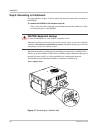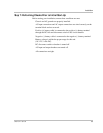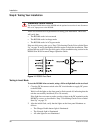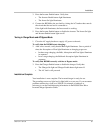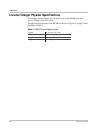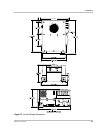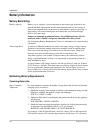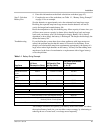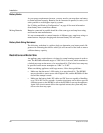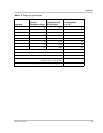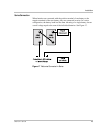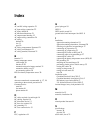
Installation
42 975-0171-01-01
Battery Banks
As your power requirements increase, you may need to use more than one battery
to obtain sufficient capacity. Batteries can be connected in parallel, in series, or in
series-parallel to create higher capacity systems.
See “Cabling and Hook-up Configurations” on page 44 for more information
about battery inter-connection schemes.
Mixing Batteries Batteries connected in parallel should be of the same type and amp-hour rating
and from the same manufacturer.
It is not recommended to connect batteries of different types, amp-hour ratings or
manufacturers. Improper charging and decreased battery life will result.
Battery Bank Sizing Worksheet
The following worksheet is a guide to help you determine your battery needs. Be
generous in estimating the time for which you will run each of the loads to ensure
sufficient battery capacity.
Restrictions on Motor Size
An appliance may require three to six times its normal running current in order to
start. The RS3000 can handle surges to 7500 VA for 5 seconds, which translates to
a locked rotor amp on the motor of no more than 60 A. The locked rotor amp may
be specified on the motor nameplate as “LRA” or “LRI”.
When considering appliances with large motors, follow these guidelines:
• Make sure that the motor’s LRA rating is no more than 60 A. The RS3000
may not be able to start a motor with a higher LRA, and the RS3000 will shut
down if the attempt is made.
• Make sure the battery bank, DC cables and DC fuses are capable of handling
up to 750 A DC for five seconds. A weaker circuit may not be able to provide
sufficient power to the RS3000 to allow the RS3000 to start up the appliance.
Again if the circuit cannot deliver the required current, the system may shut
down or the fuse may open.



